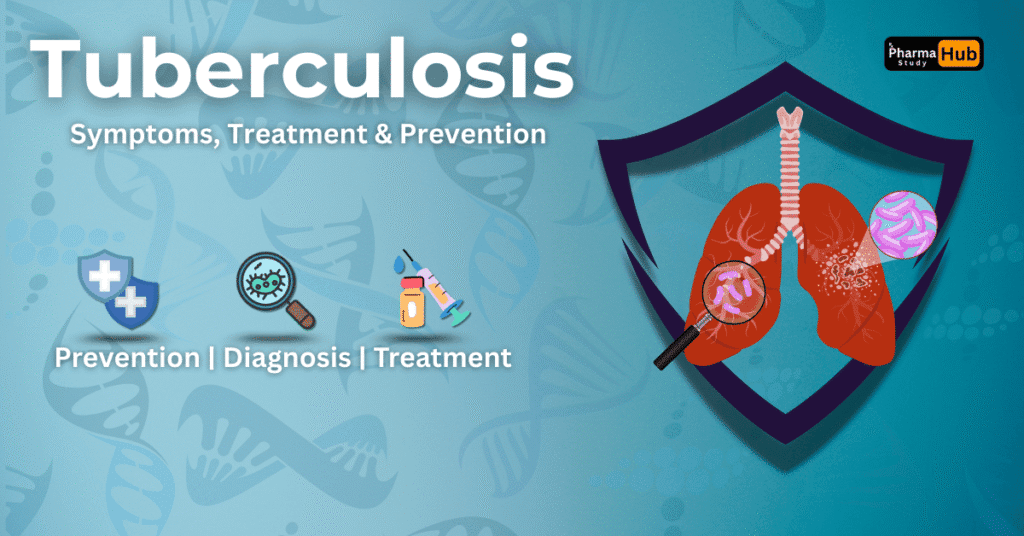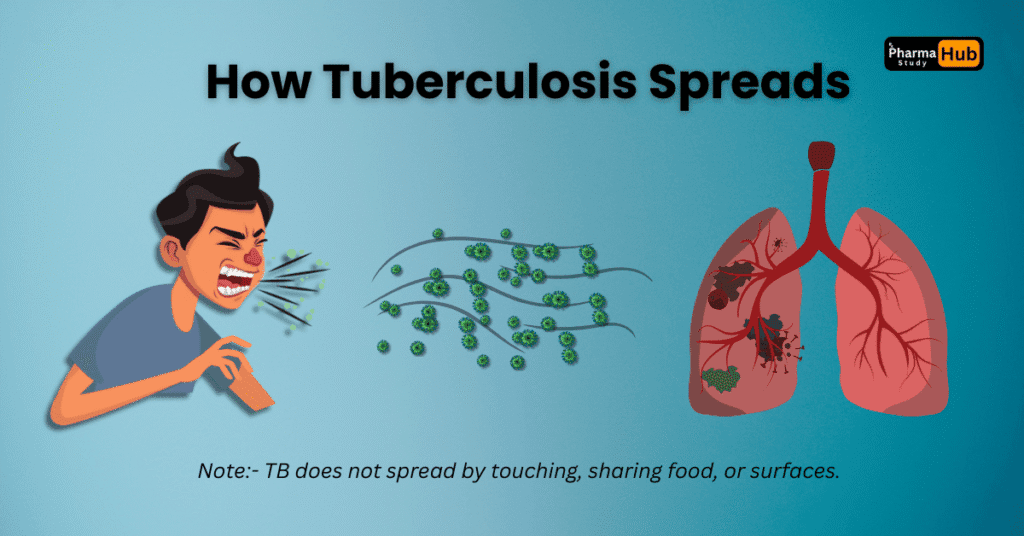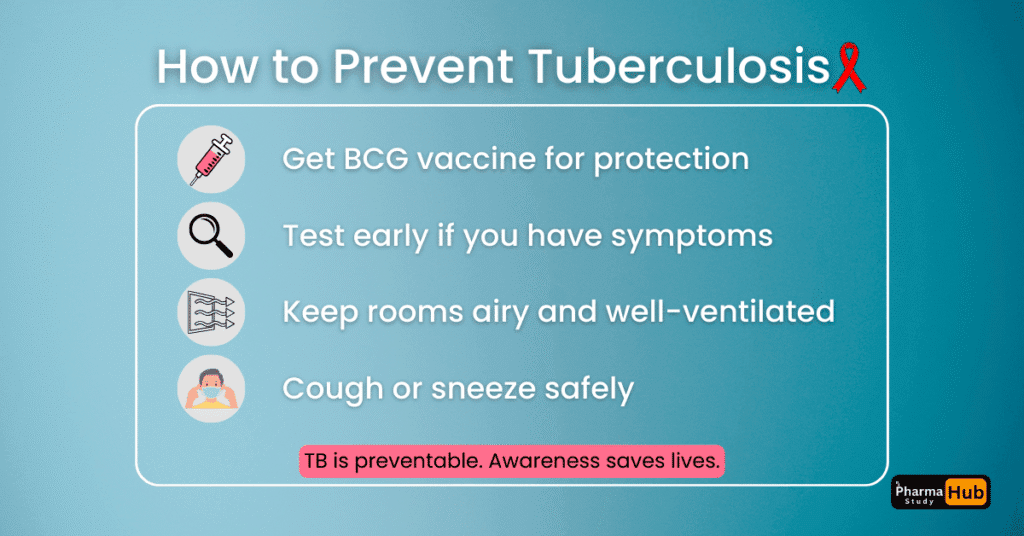
Table of Contents
Introduction to Tuberculosis
Tuberculosis (TB) is one of the oldest diseases known to humanity, yet it still affects millions of people every year. It is caused by a bacterium called Mycobacterium tuberculosis, which mainly attacks the lungs but can also harm other parts of the body.
Even though TB is preventable and treatable, it remains a major global health challenge. According to the World Health Organization, TB is among the top infectious killers worldwide. This makes awareness and early detection extremely important.
Why should you care? Because TB does not only affect individuals, it impacts families, communities, and entire health systems. Understanding the basics of TB is the first step toward controlling and eventually eliminating it.
Did You Know!
“Did you know that Tuberculosis kills more people each year than HIV and malaria combined?”
Despite being preventable and treatable, TB still claims over 1.3 million lives annually. This makes it one of the deadliest infectious diseases in the world.
Quick Facts About TB
- Cause: Mycobacterium tuberculosis
- Mainly Affects: Lungs (but can spread to other organs)
- Global Impact: Millions infected every year
- Good News: TB is curable and preventable with proper treatment
Causes and Transmission
Tuberculosis is caused by a bacterium called Mycobacterium tuberculosis. This tiny germ can live in the body without causing illness for a long time. When the immune system becomes weak, the bacteria become active and start multiplying.
How does TB spread?
TB spreads through the air when a person with active TB in the lungs coughs, sneezes, or even talks. If someone nearby breathes in these germs, they can get infected. It is important to know that TB does not spread by shaking hands, sharing food, or touching surfaces.
Who is at higher risk?
- People with weak immune systems (like those with HIV)
- Individuals living in crowded or poorly ventilated spaces
- People with poor nutrition or chronic illnesses

Symptoms and Types of TB
Tuberculosis does not always show symptoms right away. In fact, many people carry the bacteria without feeling sick. This is called latent TB. The problem starts when the bacteria become active, leading to active TB disease.
Common symptoms of active TB include:
- Persistent cough that lasts more than two weeks
- Chest pain or discomfort
- Coughing up blood or mucus
- Fever and night sweats
- Unexplained weight loss and fatigue
Types of TB:
- Pulmonary TB: Affects the lungs and is the most common form.
- Extrapulmonary TB: Affects other parts of the body like bones, kidneys, or brain.
If you notice these symptoms, it is important to get tested early. TB is treatable, but only if diagnosed on time.
Diagnosis of TB
Early diagnosis is the key to stopping the spread of tuberculosis. The good news is that TB can be detected with a few simple tests.
Common diagnostic methods include:
- Sputum Test: A sample of mucus from the lungs is checked for TB bacteria.
- Chest X-ray: Helps doctors see any damage or infection in the lungs.
- Skin or Blood Tests: These show if you have been infected with TB bacteria.
What’s new in TB diagnosis?
Modern tools like GeneXpert and AI-based chest X-rays are making detection faster and more accurate. These innovations are especially helpful in areas where healthcare resources are limited.
Did You Know!
Every year, around 10 million people fall ill with TB worldwide, but nearly 3 million of them go undiagnosed.
Early testing can save lives and prevent the spread of the disease.
Treatment and Drug Resistance
The good news is that tuberculosis is curable with the right treatment. Most patients need to take a combination of antibiotics for 6 to 9 months. It is very important to complete the full course, even if you start feeling better early. Stopping treatment too soon can lead to serious problems.
What is drug-resistant TB?
Sometimes, TB bacteria become resistant to the medicines used to kill them. This is called drug-resistant TB. There are two main types:
- MDR-TB (Multi-Drug Resistant TB): Resistant to the two most powerful TB drugs.
- XDR-TB (Extensively Drug Resistant TB): Resistant to even more drugs, making it harder to treat.
Drug-resistant TB happens mostly when treatment is not taken properly or when medicines are of poor quality. This is why adherence to treatment is so important.
⚠ Disclaimer
The content provided in this blog is for educational and informational purposes only. It should not be taken as medical advice. Always consult a licensed healthcare professional before starting, changing, or stopping any medication. Treatment decisions should be based on a doctor’s evaluation of your individual health status and medical history.
Prevention and Control
The best way to fight tuberculosis is to stop it before it spreads. Prevention is easier than treatment, and it starts with awareness.
How can TB be prevented?
- Vaccination: The BCG vaccine offers protection, especially for children.
- Early Detection: Getting tested if you have symptoms or close contact with a TB patient.
- Good Ventilation: TB spreads in the air, so fresh air reduces the risk.
- Cover Your Mouth: People with TB should cover their mouth when coughing or sneezing.
Community efforts matter too. Public health programs, awareness campaigns, and proper treatment support play a big role in controlling TB.

Global Strategies and Innovations
Tuberculosis is not just a local problem, it is a global challenge. To fight TB, the World Health Organization (WHO) launched the End TB Strategy, which aims to reduce TB deaths by 95% and cut new cases by 90% by 2035.
What are the key strategies?
- Early Detection and Treatment: Making TB tests and medicines available to everyone.
- Preventive Care: Expanding vaccination and preventive therapy.
- Research and Innovation: Developing new drugs, faster diagnostic tools, and better vaccines.
What’s new in TB innovation?
- AI-powered X-rays for quick screening in remote areas.
- Shorter treatment regimens that make it easier for patients to complete therapy.
- New vaccines under development to provide stronger and longer-lasting protection.
Global collaboration is the only way to eliminate TB. Governments, health organizations, and communities all have a role to play.
TB in India
India carries the highest burden of tuberculosis in the world, accounting for nearly one-fourth of global TB cases. This makes TB a major public health challenge for the country.
Why is TB so common in India?
- Large population and crowded living conditions
- Poverty and malnutrition
- Limited access to healthcare in rural areas
What is being done?
The Government of India has launched the National TB Elimination Program (NTEP) with the goal to eliminate TB by 2025, five years ahead of the global target. Key steps include:
- Free TB testing and treatment at government health centers
- Nutritional support for patients
- Use of digital tools for tracking and monitoring cases
Despite these efforts, challenges like drug resistance and stigma still remain. Public awareness and community participation are crucial to achieving the elimination goal.
Challenges and Future Outlook
Even with progress in treatment and prevention, tuberculosis remains a tough challenge. Why? Because the fight against TB faces several obstacles.
Major challenges include:
- Drug Resistance: MDR-TB and XDR-TB make treatment longer and more expensive.
- Stigma: Many people hide their illness due to fear of discrimination.
- Funding Gaps: TB programs often lack enough resources for research and patient support.
- Access to Care: Rural and low-income communities still struggle to get timely diagnosis and treatment.
What does the future look like?
Experts believe that with strong global cooperation, new vaccines, and better diagnostic tools, TB can be eliminated. But it will take awareness, innovation, and commitment from everyone governments, healthcare workers, and communities.
You May Also Like
-
Tuberculosis Explained: Symptoms, Diagnosis, Treatment & Global Efforts to End TB
-
Anaemia Explained: Iron Deficiency vs Megaloblastic – Causes, Symptoms, and Treatment
-
Alcoholic Liver Disease (AALD): Symptoms, Stages, Diagnosis and Recovery
-
Peptic Ulcer Disease (PUD): Symptoms, Causes, Tests, Treatment & Diet
FAQs - Tuberculosis
Tuberculosis is an infectious disease caused by the bacterium Mycobacterium tuberculosis. It mainly affects the lungs but can also spread to other parts of the body like the spine, kidneys, or brain. TB is curable and preventable with proper treatment.
TB spreads through the air when a person with active TB in the lungs coughs, sneezes, speaks, or even sings. People nearby can breathe in the bacteria and become infected. TB does not spread by shaking hands, sharing food, or touching surfaces.
Common symptoms include a cough lasting more than two weeks, chest pain, coughing up blood or mucus, fever, night sweats, weight loss, and fatigue. Symptoms usually develop slowly, which is why many people delay seeking care.
- Latent TB: The bacteria are in your body but inactive. You have no symptoms and cannot spread TB to others.
- Active TB: The bacteria are active, causing illness and making you contagious. Without treatment, active TB can be fatal.
Doctors use a combination of tests, such as a skin test or blood test to detect infection, and chest X-rays and sputum tests to confirm active TB disease. In some cases, advanced tools like GeneXpert or AI-based X-rays are used for faster results.
TB is treated with a combination of antibiotics for 6 to 9 months. It is very important to complete the full course of treatment to avoid drug resistance. For drug-resistant TB, treatment can take longer and involve more medications.
Drug-resistant TB occurs when TB bacteria no longer respond to the standard medicines. This usually happens when treatment is not completed properly. MDR-TB (multi-drug resistant) and XDR-TB (extensively drug resistant) are the most severe forms.
Yes. Prevention includes vaccination (BCG), early detection, proper ventilation in living spaces, and ensuring patients complete their treatment. Covering the mouth while coughing and wearing masks can also reduce the spread.
Conclusion
Tuberculosis is an old disease, but it is still one of the world’s biggest health challenges. The good news is that TB is preventable and curable when detected early and treated properly. Every step counts—whether it’s getting tested, completing treatment, or spreading awareness in your community.
The fight against TB is not just for doctors and governments. It needs all of us. By staying informed and supporting those affected, we can move closer to a world free from tuberculosis.
Your role matters. If you or someone you know has symptoms, don’t wait—get tested today. Together, we can help end TB.